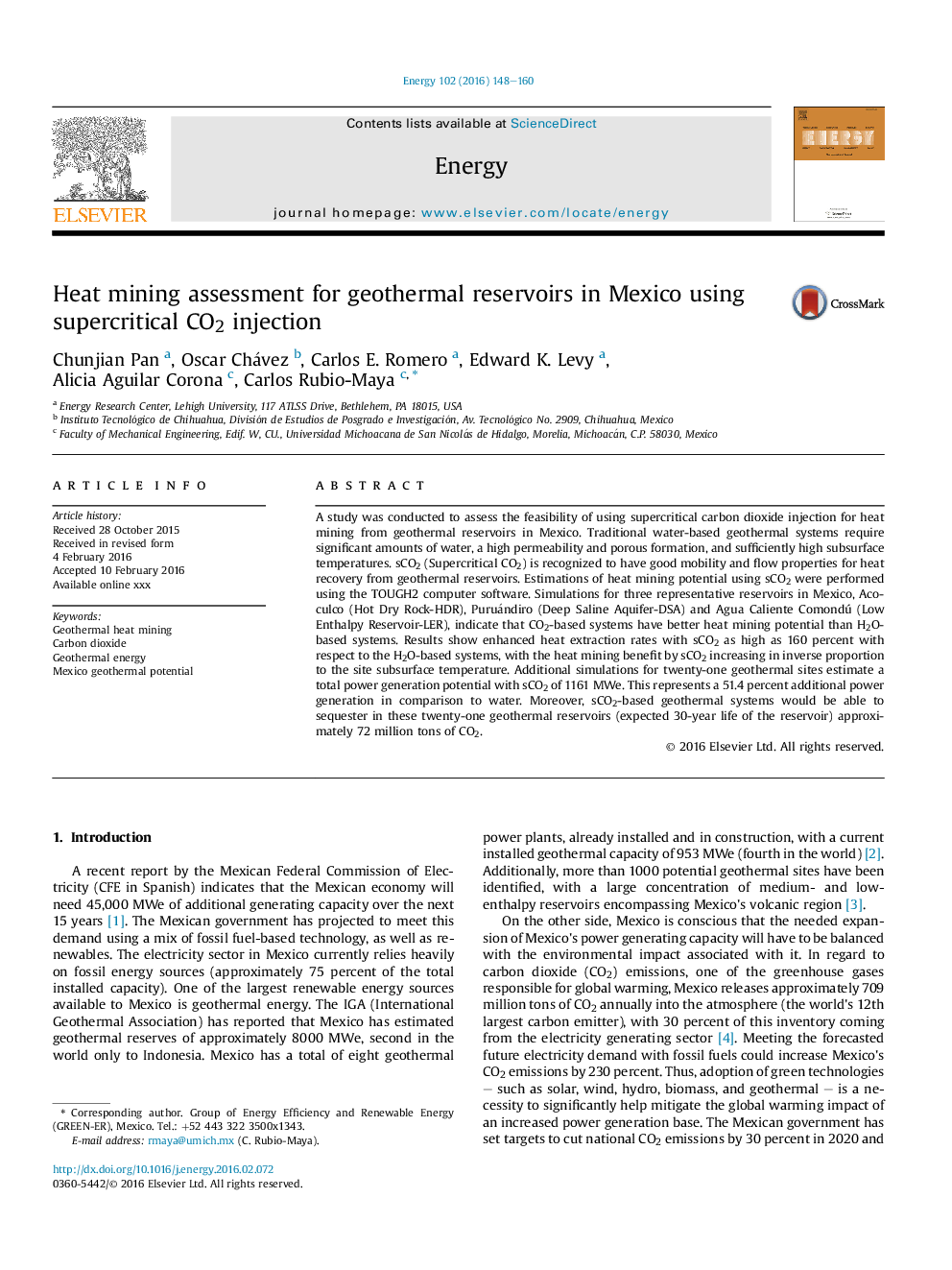| Article ID | Journal | Published Year | Pages | File Type |
|---|---|---|---|---|
| 8073978 | Energy | 2016 | 13 Pages |
Abstract
A study was conducted to assess the feasibility of using supercritical carbon dioxide injection for heat mining from geothermal reservoirs in Mexico. Traditional water-based geothermal systems require significant amounts of water, a high permeability and porous formation, and sufficiently high subsurface temperatures. sCO2 (Supercritical CO2) is recognized to have good mobility and flow properties for heat recovery from geothermal reservoirs. Estimations of heat mining potential using sCO2 were performed using the TOUGH2 computer software. Simulations for three representative reservoirs in Mexico, Acoculco (Hot Dry Rock-HDR), Puruándiro (Deep Saline Aquifer-DSA) and Agua Caliente Comondú (Low Enthalpy Reservoir-LER), indicate that CO2-based systems have better heat mining potential than H2O-based systems. Results show enhanced heat extraction rates with sCO2 as high as 160 percent with respect to the H2O-based systems, with the heat mining benefit by sCO2 increasing in inverse proportion to the site subsurface temperature. Additional simulations for twenty-one geothermal sites estimate a total power generation potential with sCO2 of 1161 MWe. This represents a 51.4 percent additional power generation in comparison to water. Moreover, sCO2-based geothermal systems would be able to sequester in these twenty-one geothermal reservoirs (expected 30-year life of the reservoir) approximately 72 million tons of CO2.
Keywords
Related Topics
Physical Sciences and Engineering
Energy
Energy (General)
Authors
Chunjian Pan, Oscar Chávez, Carlos E. Romero, Edward K. Levy, Alicia Aguilar Corona, Carlos Rubio-Maya,
